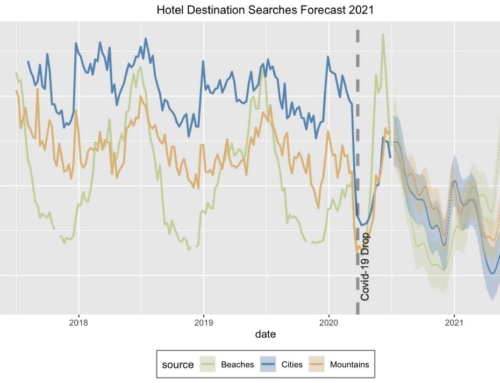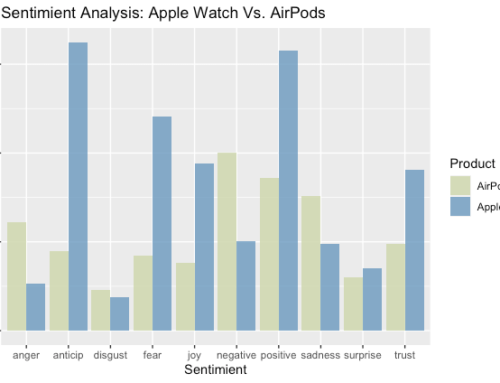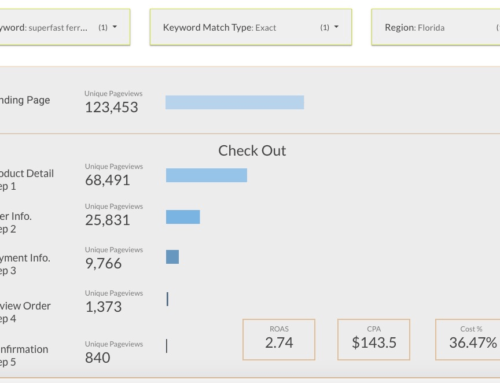As marketers, we must understand how every marketing channel impacts sales in order to adjust and find a better marketing mix. In this article, we will explore the most common ways and tools to optimize the marketing media mix and draw some conclusions about it. In today’s developed digital world, we have access to seemingly endless amounts of data that allow us to attribute sales or sale percentages to specific media channels such as Paid Search, Display, Organic Search, Retargeting, and emailing, among others.
Digital Attribution Modeling
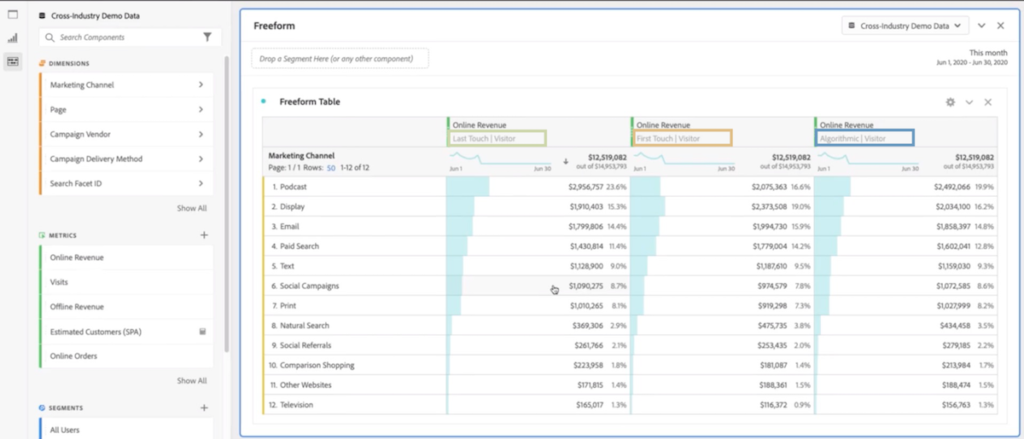 The most popular web analytics tools in the market, such as Adobe Analytics and Google Analytics, automatically allow us to compare default digital attribution models to specific metrics and dimensions such as revenue and conversions. For example, the image above shows the Attribution IQ feature within Adobe Analytics, which compares the Last Touch, First Touch, and Algorithm attribution models based on revenue.
The most popular web analytics tools in the market, such as Adobe Analytics and Google Analytics, automatically allow us to compare default digital attribution models to specific metrics and dimensions such as revenue and conversions. For example, the image above shows the Attribution IQ feature within Adobe Analytics, which compares the Last Touch, First Touch, and Algorithm attribution models based on revenue.
Google Analytics also provides a similar view, where we can compare identical attribution models based on lead conversions. The last column, highlighted in green, shows the difference between the selected models.
In the top menu, inside the orange rectangle, we can choose other dimensions to gain further insights into medium, source, and campaigns. It also allows showing custom channels grouping, which I highly recommend creating to differentiate essential channels such as branded paid search, generic paid search, retargeting, and paid social. The latter requires prior work to implement tracking in campaigns and make adjustments in Google Analytics.

Not long ago, most web analytics attribution models assigned conversions based on pre-existing highlight rules (based-rule models).
This scenario has been improved for some players like Adobe Analytics and Google Analytics, creating new attribution models that include statistical and machine learning approaches, considering how users interact with the different touchpoints along the conversion path.
Not long ago, most web analytics attribution models assigned conversions based on pre-existing highlight rules (based-rule models). However, this scenario has improved for some players like Adobe Analytics and Google Analytics, as they have created new attribution models that include statistical and machine learning approaches, considering how users interact with different touchpoints along the conversion path.
Unfortunately, these new models are still far from being the ultimate media mix guideline. They are suitable for measuring and comparing digital campaign performance, adjusting business short-term results, and collecting valuable insights. However, they are not ideal for measuring offline efforts, brand awareness, and the relationship between all these variables.
Media Mix Modeling
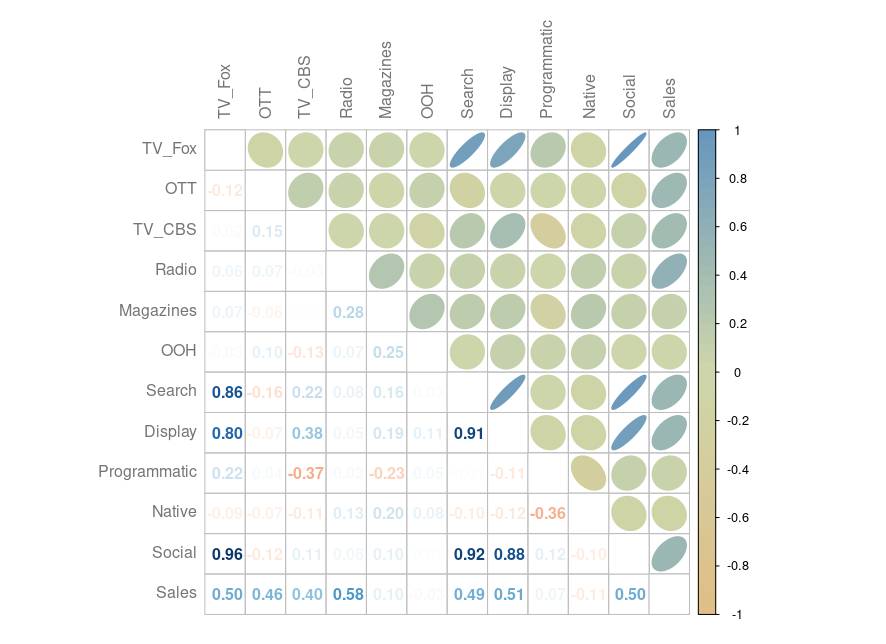 While the previous attribution measurements are commonly used in digital marketing, traditional Media Mix Modeling is still highly relevant. This model is conducted using a multivariable equation that measures the relationship between one variable and others using historical and present data.
While the previous attribution measurements are commonly used in digital marketing, traditional Media Mix Modeling is still highly relevant. This model is conducted using a multivariable equation that measures the relationship between one variable and others using historical and present data.
The graph above shows the result of a correlation analysis conducted to understand the potential relationship between all the variables (digital channels, offline channels, and sales). This analysis allows us to create multiple hypotheses to be later validated or refuted using regression analysis.
Regression Analysis for Marketing Channels
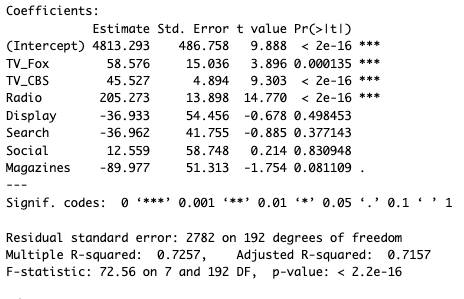
As we can see in the result (please note that we used random numbers), the negative P-Value (2.2e-16) indicates that our evidence is strong enough to suggest an effect between the Sales and the other channels.
The R-squared value is greater than 0.7, which is considered a substantial effect size.
Finally, according to their coefficients, the priority of the media channels should be Radio > TV FOX, TV, CBS, and Paid Social.


